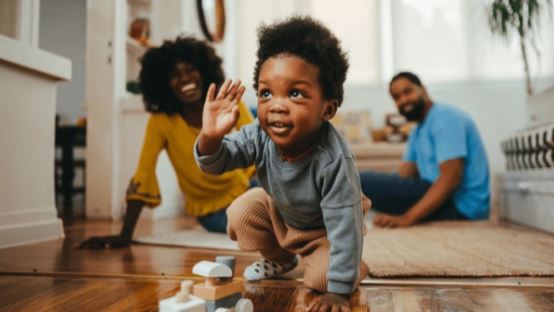Lifestyle
Is your child safe at home? 6 checkboxes to know

When it comes to keeping children safe at home, many parents assume that home is the safest place. But for many children, the household can hide unexpected hazards.
Reports show that home accidents involving children are a rising concern, with falls, burns, and accidental poisoning ranking as some of the most common incidents in homes.
According to a study, nearly 60% of childhood injuries occur within the home environment. Here are 6 essential safety checkboxes to help ensure that a child stays safe, whether the household is big or small.
1. Protect against unwanted or unsafe contact in a joint family
In a joint family setup, children benefit from being surrounded by grandparents, aunts, uncles, and cousins, but the presence of a larger group can also increase safety risks. As family members often host visitors, parents must ensure that children are only in the company of trusted individuals. Make it a point to communicate with family members to establish guidelines for supervising children, especially when guests are around. Set boundaries for rooms children can enter, particularly in situations where they might encounter unfamiliar individuals.
2. Keep dangerous electronics and appliances out of reach
Every home, regardless of family size, is likely to have multiple electronic devices and household appliances. These items can become dangerous when left unsupervised. Cords, chargers, hot irons, and kitchen appliances should be stored away from a child’s reach. Go for plug covers and keep electrical devices unplugged when not in use. If possible, set up designated areas for gadgets so children can move freely without the risk of injury.
3. Secure gas lines and cooking areas
Kitchens are high-risk areas, especially with gas cylinders and open flames present. Gas leaks are not uncommon in households, making it important to ensure regular maintenance of gas lines and appliances. Install a childproof gate at the entrance of the kitchen if children are too young to understand the risks associated with cooking appliances. In joint families, where multiple members may use the kitchen, make it a rule to turn off the gas and any cooking equipment immediately after use. This small habit can prevent potential accidents and keep the home environment safer.
4. Ensure locks are childproof but accessible in emergencies
Door and window locks are another essential consideration. In a joint family, children may easily wander from one part of the home to another, sometimes even venturing outside. Installing childproof locks on exterior doors and windows is an effective way to prevent children from wandering outdoors unsupervised. For homes where children live with fewer adults, it’s equally important to make locks accessible in case of an emergency. Parents may want to place child-safe locks on certain rooms, like storage spaces or balconies, to ensure children don’t accidentally lock themselves in.
5. Make the balcony and windows kid-friendly
Balconies are common in homes, especially in apartment buildings, and they can pose serious risks for children. Balcony railings should be high enough that children cannot easily climb over, and spaces between bars should be narrow. Consider adding a safety net or screen if you have young children who like to explore. For windows, install stoppers that prevent them from being opened beyond a certain height. In a joint family, ensure all family members are aware of balcony restrictions so everyone is on the same page about keeping these areas secure.






